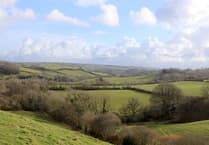Cornwall’s smallest stone circle has been protected for future generations by an independent Cornish charity.
Cornwall Heritage Trust has taken on the care of Duloe Stone Circle – an important ancient site at the southern end of the village of Duloe, near Liskeard.
The independent charity protects historic sites across Cornwall, which are all free for the general public to enter. It will manage the stone circle on behalf of the Duchy of Cornwall.
Duloe Stone Circle survives as an oval ring of eight stones measuring 11.7m long by 10.2m wide. All the stones are white quartz (uniquely among Cornish circles) and seven are still upright. They vary in height from 1.0m to 2.4m and it has been calculated that around 35 people would have been needed to move and raise the four largest stones, which may weigh up to nine tons and are placed approximately at the cardinal points, north, south, east and west. Four smaller stones fill the gaps between them.
Despite much research, stone circles are still mysterious sites. In Cornwall, they generally date from the later third and early second millennia BCE and are believed to have been gathering places for communities.
Activities seem to have included performance of ceremonies and rituals, some of which may have involved astronomical observation. Others probably related to the community’s own past, to their ancestors, and to the spirits that may have been believed to frequent important places. Duloe circle is now within fields but when built its position on a ridge between two deep and heavily wooded valleys was probably significant. The design of stone circles and the effort required to build them speak to us of increasingly sophisticated and well-organised societies.
The monument was first recorded in 1801 when Britton and Brayley wrote that: “Within a furlong north-east of the church [of Duloe], is a small Druidical Circle, that has not hitherto been noticed.”
The circle was bisected by a later hedge, which was removed in 1858. Shortly after, in 1863, three stones were re-erected and a Bronze Age urn, containing cremated human bones, was found somewhere on the site, either at the base of the fallen and broken northern stone when an attempt was made to raise it, or from within (or below) the bisecting hedge when that was removed. This discovery led to suggestions that the ring may encircle a low barrow.
Cathy Woolcock, Cornwall Heritage Trust CEO said: “The phrase ‘small but mighty’ always comes to mind with Duloe. It has been a long time coming to bring the stone circle into our care and we’re hugely grateful to the Duchy and Coodes Solicitors for all their support in making our management of it possible.”




